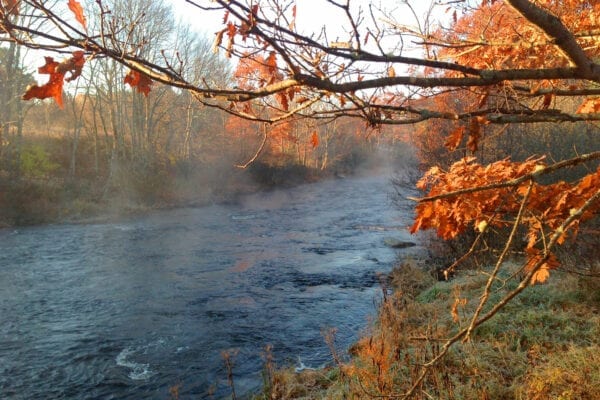
Photo courtesy Georges River Land Trust
There are more than 300 species of vascular plants in seven different natural community types. The community type that occupies the largest area on the property is the Hemlock Forest, which includes small patches of Red Maple Sensitive Fern Swamp in low-lying areas mostly associated with the riparian zone. The plant diversity at Appleton Preserve is particularly high because of the mesic soils, heterogeneity of habitats, and contrast in disturbance patterns, from spring flooding to agriculture to topsoil removal. Overall the vegetation is intact, native, and represents exemplary natural communities. Click here for a property brochure. The Georges River Land Trust acquired the 124-acre Appleton Preserve in 2006 with assistance from the Land for Maine’s Future program. The property boasts high quality wildlife habitats along the St. George River and amongst its floodplain forest, forested and open wetlands, and upland conifer forests. Most of the Appleton Preserve consists of deep glaciomarine deposits of silt loam with relatively few boulders. This has allowed the natural shaping of oxbows, ravines, and gullies found throughout the property.
Public Access
The Appleton Preserve is open to the public for day-use only; no overnight camping is allowed. Hunting is permitted with written permission. A one-mile trail/woods road takes visitors along the length of the property.
Closest Town
Appleton
Activities
Bird & other wildlife watching, hiking, cross-country skiing, snowshoeing, fishing, hunting (with written permission only)
Region
Midcoast Maine – Sagadahoc, Lincoln, Knox, Waldo
Directions
From the intersection of Routes 131 and 105 (Camden Road) in Appleton, go east on Route 105 for ½ mile. Parking for the Appleton Preserve is available at the ME Inland Fisheries & Wildlife gravel lot on the right, just before the bridge across the St. George River (see map). Information on this page reprinted with permission from the Georges River Land Trust.
The map could not be loaded. Please contact the site owner.










